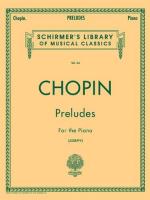|
This section contains 3,786 words (approx. 13 pages at 300 words per page) |

|
SOURCE: "Bodyscape," in Sight and Sound, Vol. 3, No. 10, October, 1993, pp. 6-10.
In the following essay, Bruzzi compares The Piano to other dramatic works dealing with sexuality in the Victorian Age and argues that The Piano is a "cryptic and evocative exploration of how women's sexuality, clothes and lives interconnect."
At the beginning of The Piano, Ada (Holly Hunter), a mute Scottish woman, arrives in New Zealand with her nine-year-old daughter Flora. They disembark on a remote beach, where they are left by the sailors who accompanied them to await Ada's new husband Stewart (Sam Neill), a rich local landowner. Their strung-out possessions are silhouetted in a flimsy line against the evening sun. Another silhouetted, skeletal structure comes into shot: a tent, made from Ada's hoops and underskirts, beneath which they shelter for the night.
The Piano ends with a parallel scene as Ada, having left Stewart, returns to...
|
This section contains 3,786 words (approx. 13 pages at 300 words per page) |

|


